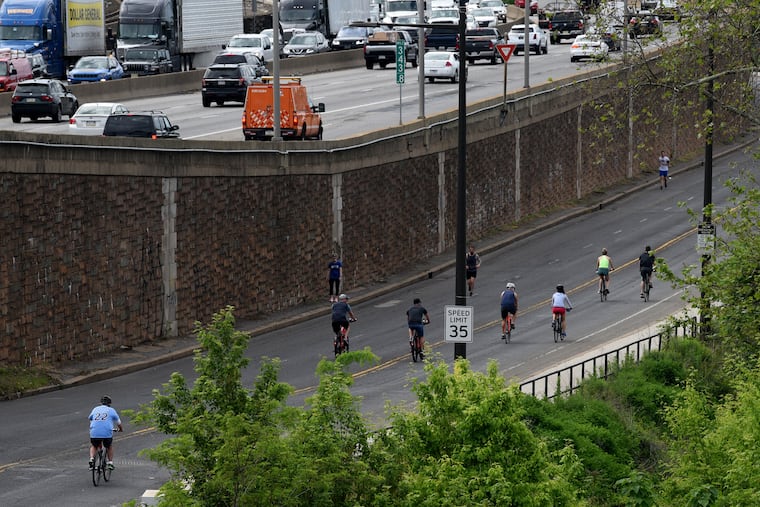Keep MLK Drive closed to cars forever | Opinion
Returning MLK Drive to “normal” — a high-injury-prone speedway that cut the people of Philadelphia off from the Schuylkill Waterfront — just isn’t an option.

When Philadelphia shut down due to the COVID-19 pandemic in March, Stephanie Ford, an avid bicyclist and small-business owner in Philadelphia, stopped riding her bike altogether.
“The trails were packed with people, and riding a bike over on Schuylkill Banks or Kelly Drive didn’t seem safe,” says Ford, the owner of Coffee Cream and Dreams cafe on Fairmount Avenue, and the founder of Pedal Posse Divas, a women’s bicycling group.
It wasn’t until later that spring that Ford and her cycling group checked out Martin Luther King Drive, which had been shut to motor vehicles since March 20. What she saw shocked her.
“It was full of people, full of life, which was really good to see — more people out exercising and utilizing that side of the drive,” she says. “There were runners, skaters, and a lot of families. There were more people than normal on bicycles, and space for everyone.”
» READ MORE: Martin Luther King Drive is not going to reopen any time soon. Here’s why.
Now, Ford and the Divas are regular users of Martin Luther King Drive. They are just a handful of the thousands of people who have utilized MLK Drive and Philadelphia’s park system since it was opened to people.
MLK Drive has become the most-used bicycle and pedestrian trail in Pennsylvania. Now, rather than allowing it to return to the pre-pandemic urban highway that cut people off from the waterfront, the city should reimagine MLK Drive as a place for people.
A four-mile park road and urban highway along the Schuylkill, MLK Drive has been the scene of at least four traffic deaths and seven serious injuries over the past decade. When the pandemic shut down the economy in spring 2020, people were looking for ways to get outdoors, safely. So, the City of Philadelphia closed MLK Drive to private vehicles, creating a new and suddenly safe space for people.
Almost overnight, MLK Drive usage swelled in usage. Daily users went from around 500 people per weekday to more than 5,000, according to engineering firm WSP, who conducted electronic counts — a rise of more than 1,300%. They additionally counted more than 9,660 people on the trail on weekends.
When data from WSP is compared with regional data, it shows that opening up MLK Drive led to 90% more people being able to experience recreation along the Schuylkill. Parks and Recreation has additionally reported that park use was up about 50% in 2020.
The need for public space like MLK Drive is there. And the path alongside MLK Drive is not large enough to accommodate the trail’s new users. We need options.
The Bicycle Coalition of Greater Philadelphia and Transit Forward Philadelphia have spent the last two months sharing two proposals for the drive with City Council members, government officials, businesses, and neighborhood civic groups.
The first proposal is to do nothing: Leave MLK Drive as is, a street for people. The last year has provided an informal study of the drive and has shown that people from all over the city, and region, want a safe place to recreate and commute. This wouldn’t be a big lift: The road has been open to people for nearly a year without incident, and 99.8% of the city’s roads remain car-centric.
The second proposal is to divide MLK Drive into a shared roadway: A multi-use path on one side that is physically separated from a two-way busway on the other. With SEPTA’s bus network redesign underway, now is the right time to look at using the road as a partial bus expressway. Putting buses on MLK Drive would provide a better, faster ride for folks who commute into Center City from neighborhoods in Northwest Philadelphia, Parkside, Mantua, Wynnefield, and the western suburbs.
Both of these proposals should be studied, as they would go a long way toward achieving the city’s climate change and Vision Zero goals. Philadelphia is in a unique position to keep MLK Drive a place for people while studying these options to understand which makes the most sense for its citizens. Returning MLK Drive to “normal” — a high-injury-prone speedway that cut the people of Philadelphia off from the Schuylkill Waterfront — just isn’t an option.
Randy LoBasso is the policy director at the Bicycle Coalition of Greater Philadelphia.